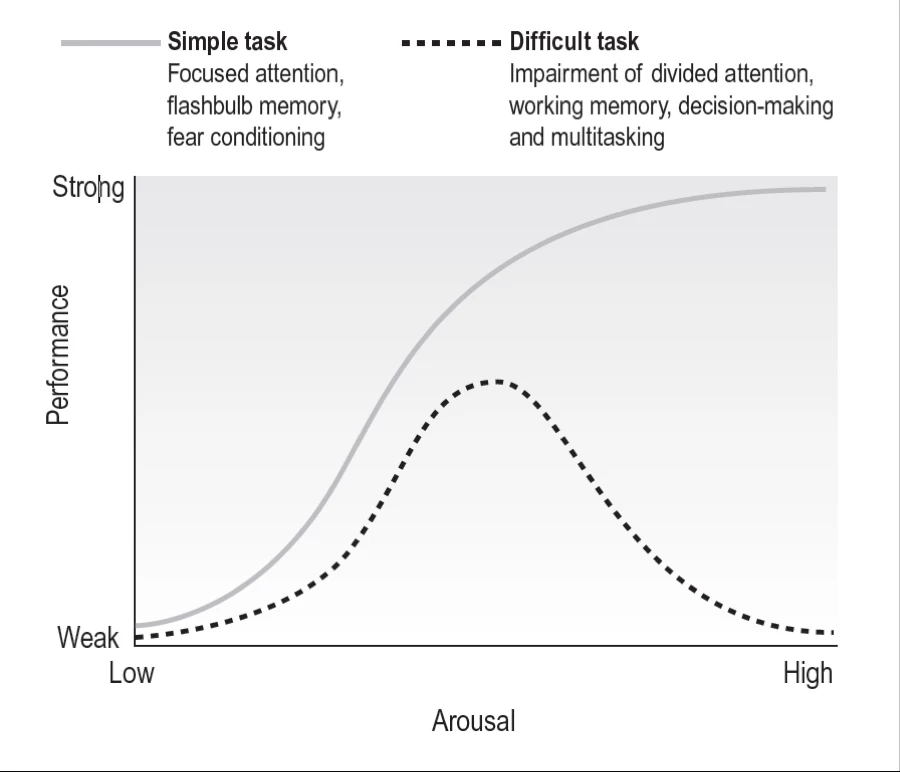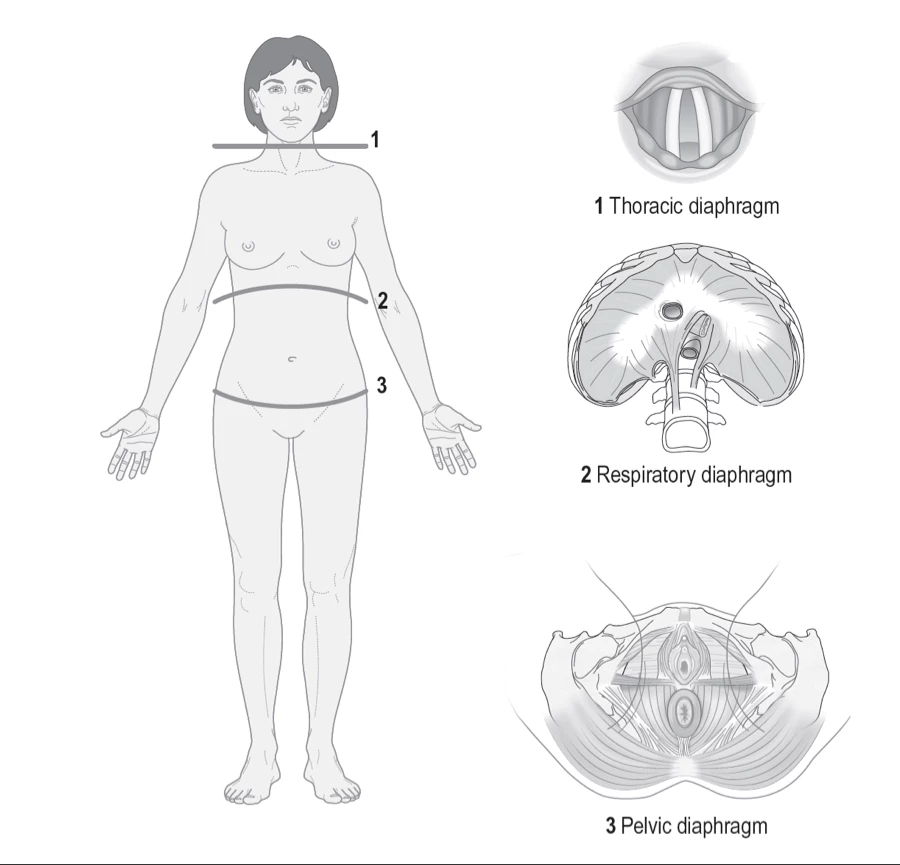A Vagus Nerve Reset: How to Connect with Your Happy Place

In this post, I am introducing a concept called The Pressure System. The Pressure System is a “3D Approach” to Protecting Your Happy Place, which means a place where you are resilient, have a strong core and low back, and you can slay stress like a champion.
The science of stress is clear. Stress is a bear. But while stress can be blamed for a plethora of disease processes and even premature death, there is a silver lining – stress doesn’t have to equal doomsday.
Stress can actually be GOOD for you, but here’s the catch: You have to believe stress will make you stronger and more resilient in order to reap its benefits. But for those who perceive stress as negative or bad, research shows they have not only a higher chance of premature death and illness, they, in fact, do die earlier and with more disease than their positive, gritty counterparts.
Watch the TED talk from Dr. Kelly McGonigal on How to Make Stress Your Friend to learn more.
Change Your Vantage Point of Stress
So what can we do? We can change our perspective on stress. We can change the way we look at stress.
Stressing (Less) isn’t accomplished by avoiding struggle or difficulty or even pain. In fact, according to recent research, trying to avoid stress can backfire and create more stress and pain.
Stressing less is actually found in developing healthy coping mechanisms to adversity and stress. Some may say that includes facing those situations head on, and emerging the victor, or at least, finding a way to cope with the stress in a manner you can look back on with a sense of peace.
My life has brought me plenty of those opportunities (notice I didn’t say adversities), so I’d like to share a bit of what I’ve learned through my years of study and research.
The easy answer to stressing less is this: To beat stress you have to overcome pressure, both literal (physical) pressure and figurative (psychological) pressure.
The harder question to answer though is, how do pressure and stress affect you? Your health? Your sense of well-being? And yes, even your brain function and pain perception?
Pressure is Key
Science has targeted perceived stress as a risk factor for many health problems, including longevity, or how long you live. The most obvious diseases where stress is a causative factor are stomach ulcers, depression, heart attack risk, or cancer.
Chronic stress is also a factor in causing your body to lose control over its ability to regulate inflammation in the body. But did you know there are many less obvious diseases and disabilities that stress can cause or worsen?
The pressure that perceived stress places on the American worker is increasing, with the Centers for Disease Control reporting job stress as the most frequently cited cause of stress for American adults. The situations that create stress are varied, and depend on person-environment interaction and fit.
This means there is no easy answer for why job stress is cited as the worst stress type. In other words, stress and what is perceived as stressful is a highly personalized experience.
However, what CAN be agreed upon in the scientific literature is what creates non-optimal pressure inside our body. The literal pressure in the body impacts our perception of stress in a profound and measurable way.
Let’s talk about a different approach to managing both psychological and physical stress.
Instead of talking about psychological or social pressure, I want to talk about how mechanical alterations of pressure in our body can influence the psychological or social perception of stress. This is a backdoor approach, if you will, to talk about stress management. It’s a physical way of managing a psycho-emotional-spiritual problem.
It’s the nuts and bolts of yoga philosophy – of practicing mindfulness in all situations, not just tranquil ones where you are already relaxed.
The 3D Pressure System: A “Back Door Approach” to Best Health
We often think that managing stress can only be addressed with some kind of talk therapy or psychotherapy. But did you know that there are also “back door” means for managing stress? Ones well supported by the literature include meditation, mindfulness, and learning to change our self-talk habits. But there’s one more you may have not considered.
Enter the concept of the “Pressure System” or the 3D Approach, a 3-dimensional approach that addresses the body’s 3 main diaphragms, which have a profound impact on managing back pain, pelvic pain, and a slew of issues listed further down in this post.
The core of the 3D pressure system theory, no pun intended, is that there are multiple diaphragms in the body that, depending on their state of fitness, will dictate optimal functioning, or optimal arousal.
Optimal Arousal is another way of saying Protecting Your Happy Place
Optimal arousal is your happy place – allostasis, or the ability for the body to be in an ongoing but steady state of equilibrium, physiologically and psychologically.
Simply put, the physical body can help the mental body or mind change how it perceives stress and pain, which is great news for those of you who have tried conventional medical or mental health therapies that have failed.
It’s also good news if you are a healthcare practitioner who has heard countless arguments between the pain science and biomechanics communities, each naysaying the other’s relevance.
I say both communities matter, and you didn’t fail as a patient. The healthcare system failed you. You can get better, and you can feel better. Pain science matters. Biomechanics matters. They both matter because each has an influence on how we feel and experience pain and stress.
If I, as a doctor of physical therapy and athletic trainer, can lessen someone’s pain permanently, I have done my job well. And this approach I am about to share is one I have used for some time to do just that – ease people’s suffering and help them manage stress with success.

(The Law of Optimal Arousal. ©2016. Garner, G. Medical Therapeutic Yoga. Handspring Pub. Ltd UK. Excerpt with permission and courtesy of Medical Therapeutic Yoga. No reproductions or use of this image is allowed without permission from the publisher and author.)
The Take Home Message: The 3D Pressure System
So how is the pressure system meaningful to you? If you have ever felt stressed, or perceived pain, and/or had an orthopaedic injury, then you will want to know about the “3D Pressure System.”
You cannot have ideal physical health without considering the vital tissues that make up the THREE DIAPHRAGMS. It is these three diaphragms that are the major driver for the pressure system problems I’ve listed below.
The Three Diaphragms
What are the three diaphragms? The KISS (keep it simple stupid) answer is the three diaphragms consist of the laryngeal (which I sometimes refer to it as thoracic), respiratory, and pelvic diaphragms.
Each of the three diaphragms is comprised of the following:
- Laryngeal (thoracic) diaphragm – The vocal cords, also called folds, which are influenced by muscles, tendons, and cartilage located near to, and outside of, the vocal folds. There are both intrinsic and extrinsic laryngeal muscles that have direct and indirect effects on this particular diaphragm & systems functioning through its innervation by the vagus nerve. This means this diaphragm alone can affect whole-body health.
- Respiratory diaphragm – This was formerly the “chief” diaphragm. It used to be thought of as the only diaphragm involved in respiration, however, overwhelmingly this is no longer accepted as true. The respiratory diaphragm is an important member of the 3D team that offers continuation of tissue and neurovascular structures that comprise the mid-way point of the three diaphragms. It is a contributor to intra-abdominal pressure regulation. By anastomoses or union of the phrenic with the vagus along its wandering route through the foramen or opening of the diaphragm, the respiratory diaphragm also affects whole health.
- Pelvic diaphragm – This diaphragm secures the terminal end of the 3 diaphragms. The pelvic diaphragm is a complex network, chock full of bundles of richly supplied neurovascular structures that feed the pelvic floor & sexual organs. The pelvic floor is chiefly comprised of the levator ani group, the primary skeletal support of pelvic organ support. Through research done on females with complete spinal cord injury, it is understood that the vagus nerve influences sexual function and arousal in a unique way if the spinal cord is severed. This discovery means that again, vagus nerve input wanders all the way to a kind of secret backdoor opening to charge, and intimately dictate, sexual functioning and pleasure. To understand more about the female pelvic diaphragm, visit this Interactive female pelvis.
The Connecting Point: What Happens in Vagus Doesn’t Stay in Vagus
Now that you have an understanding of what the 3 diaphragms are, how are they connected and why is this important?
The three diaphragms are connected by fascia, the connective tissue between the internal organs and muscles, and–most importantly–a critical cranial nerve, the vagus nerve. In Latin vagus means “wandering,” which gives you a sneak peek at its vast realm of control. What the vagus nerve–the 10th cranial nerve–influences has only been recently understood and is still under heavy scrutiny.
However, the take-home is that the vagus nerve can ultimately yield outright dictatorial control over your overall health. This finding makes the vital vagal connecting point of the three diaphragms a point of focus. This is especially true since it can exact not only physiological control, but it can also determine psychoemotional outcomes and influence choices we make, such as the interpretation of pain or whether or not a situation is stressful. See the Three Diaphragms figure below:

(The Three Diaphragms. ©2016. Garner, G. Medical Therapeutic Yoga. Handspring Pub. Ltd UK.
Excerpt with permission and courtesy of Medical Therapeutic Yoga. No reproductions or use of this image is allowed without permission from the publisher and author.)
Identifying the Pressure System
The Pressure System is the connecting point and integrity facilitator for the three diaphragms. Its functioning determines optimal pressure in the cavities of the body and perception of (external) threat or pain (internal) in the mind.
What types of problems can arise from a lack of optimal pressure between the diaphragms? First, it is important to understand the three types of pressure:
- Subglottal pressure (SGP) – This type of pressure dictates whether or not you can swallow, speak, or sing. It affects sneezing, vomiting, and coughing through the graded closure of the glottis (the opening of the vocal folds). The glottis and its friend the epiglottis closes to prevent air escape from the thorax and gastric contents from entering the mouth, and vice-versa. Subglottal pressure also dictates what happens during childbirth via its influence on the pelvic diaphragm, because both must remain relaxed to give birth. More importantly, threat perceived in speaking, swallowing, or any stress felt or perceived in the brain or from the lower 2 diaphragms can affect SGP, which in turns affects performance and long-term integrity of the vocal folds.
- Intra-thoracic pressure (ITP) – This type of pressure dictates not only airflow but influences blood flow as well. Since the 1960’s it has been understood and accepted that circulation and respiration are intimately connected. There is a hydraulic effect that occurs in the chest. When intra-thoracic pressure decreases, blood flow returning to the heart increases, so it is important that the respiratory diaphragm action is coordinated with the other two diaphragms, in order to properly inflate the lungs.
- Intra-abdominal pressure (IAP) – This type of pressure influences stiffness of the vertebral column, as well as what happens with pelvic organ alignment and continence, including whether or not a woman experiences prolapse or a man or woman can engage in pain-free sexual activity.
This is a short list of issues I have seen from impaired pressure problems:
- Pelvic floor dysfunction
- Pelvic organ prolapse
- Stress urinary incontinence
- Hernias
- Gastroesophageal reflux
- Vocal dystonia or voice problems and vocal/throat pain
- Laryngitis or chronic vocal problems
- Neck pain
- Mid-back pain
- Low back pain
- Poor sleep and/or sleep apnea issues associated with open-mouthed breathing
- Postural control issues
- Developmental delays
- Allostatic load (immune problems)
- Poor digestion
- Swallowing disorders
- Vocal fatigue
- Poor vagal tone
- Cardiovascular issues
- Persistent or chronic pain
- Vagal dysregulation and poor stress response
This isn’t an exhaustive list, but it’s some of the issues I have seen and/or that are documented in the literature. Solutions to regulate this pressure are complex, but the easy answer is to improve pressurization between the three diaphragms, or rather, optimize it. One of the ways I teach folks to do this is through something I call THE NAP MEDITATION.
Meditation, exercise, mindfulness, and other yoga or contemplative-based integrative medicine techniques have great support in improving stress response and resilience. In part 2 of this post, I’ll introduce a simple way to regulate the 3D Pressure System, called The NAP Meditation. I will also include a free practice video in the post. See below!
Further your studies with YogaUOnline and Dr. Ginger Garner – The Essential Vagus Nerve: Achieving Nervous System & Whole Health Balance.
Reprinted with permission from www.gingergarner.com

Ginger Garner DPT, ATC/LAT, PYT
Dr. Garner is a physical therapist, author, and educator. She has spent her multi-decade career dedicated to treating chronic pain in women’s health & orthopaedics, founding one of the first integrative physical therapy practices in the US. She is the founder of Professional Yoga Therapy Institute®, the first yoga therapy certification for healthcare providers in the world & the author of Medical Therapeutic Yoga, slated for translated in 4 foreign languages.
Ginger teaches online, domestically, & internationally through universities & educational organizations. As a vocalist & perpetual student, Ginger takes a “whole person” biopsychosocial approach to the practice of physical therapy, where she has spent 25 years studying and using Yoga, Pilates, Music, Mindfulness, Meditation, Manual Therapy, Ayurveda, and other Functional and Integrative Medicine techniques in self-care and clinical care.
Ginger is an outspoken advocate for tackling the global maternal health crisis through public health education & research. Her most recent pursuit includes running for public office in North Carolina in order to tackle healthcare and education inequities. Ginger lives with her husband, three sons, and their rescue pup, Scout, in the eastern United States. Visit Ginger at www.gingergarner.com.
Selected Sources
- Bordoni B, Marelli F, Bordoni G. A review of analgesic and emotive breathing: a multidisciplinary approach. Journal of Multidisciplinary Healthcare. 2016;9:97-102. doi:10.2147/JMDH.S101208. https://www.ncbi.nlm.nih.gov/pmc/articles/PMC4778783/
- Bordoni B, Marelli F, Morabito B, Sacconi B. Manual evaluation of the diaphragm muscle. International Journal of Chronic Obstructive Pulmonary Disease. 2016;11:1949-1956. doi:10.2147/COPD.S111634.
- Garner, G. Medical Therapeutic Yoga: Biopsychosocial Rehabilitation & Wellness Care. Handspring Pub. Ltd., Scotland, UK. 2016.
- Saunders K. Recent advances in understanding pelvic-floor tissue of women with and without pelvic organ prolapse: considerations for physical therapists. Phys. Ther. 2017; 97:1-9.
- Komisaruk BR, Whipple B, Crawford A, et al. Brain activation during vaginocervical self-stimulation and orgasm in women with complete spinal cord injury: FMRI evidence of mediation by the vagus nerves.Brain Res. 2004;1024(1–2):77-88. doi: https://doi.org/10.1016/j.brainres.2004.07.029.



